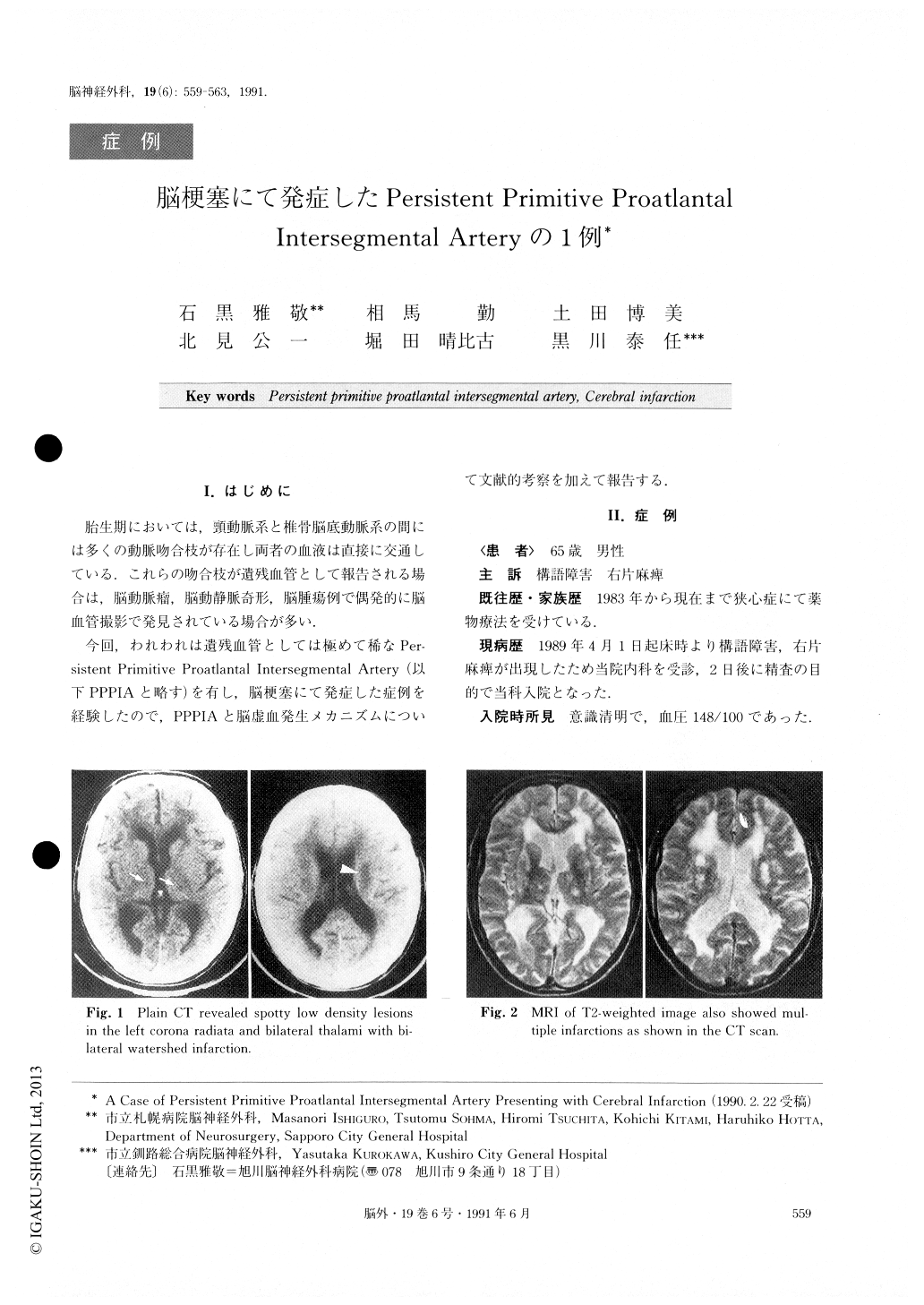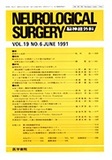Japanese
English
- 有料閲覧
- Abstract 文献概要
- 1ページ目 Look Inside
I.はじめに
胎生期においては,頸動脈系と椎骨脳底動脈系の問には多くの動脈吻合枝が存在し両者の血液は直接に交通している.これらの吻合枝が遺残血管として報告される場合は,脳動脈瘤,脳動静脈奇形,脳腫瘍例で偶発的に脳血管撮影で発見されている場合が多い.
今回,われわれは遺残血管としては極めて稀なPer—sistent Primitive Proatlantal Intersegmental Artery(以下PPPIAと略す)を有し,脳梗塞にて発症した症例を経験したので,PPPIAと脳虚血発生メカニズムについて文献的考察を加えて報告する.
Abstract
A case of persistent primitive proatlantal interseg-mental artery (PPPIA) is reported. A 65-year-old male with treated hypertension was admitted to our clinic complaining of dysarthria and hemiparesis of sudden onset two days after the ictus. CT revealed spotty low-density lesions in the left corona radiata and bilateral thalami with bilateral watershed infarction. MRI find-ings were also compatible with cerebral infarction. Left common carotid angiography demonstrated a large anastomosis between the external carotid artery and the vertebral artery at the proatlantal region. Neither of the vertebral arteries were visualized on digital subtrac-tion aortography. All the blood circulation of the ver-tebro-basilar system was through this anastomotic artery (PPPIA) . A flow study revealed hypoperfusion in the territory of the left middle cerebral artery on 133Xe SPECT. Bone window CT of cervical vertebrae revealed hypoplasia of the left transverse foramen in C2, C3, C4, C5, C6 vertebrae. This case is very sugges-tive of an anaplasia or hypoplasia of the vertebral arte-ries. The etiology of his left frontal infarction seemed to be a blood-stealing phenomenon of long standing, from the anterior to the posterior circulation through the PPPIA.

Copyright © 1991, Igaku-Shoin Ltd. All rights reserved.


